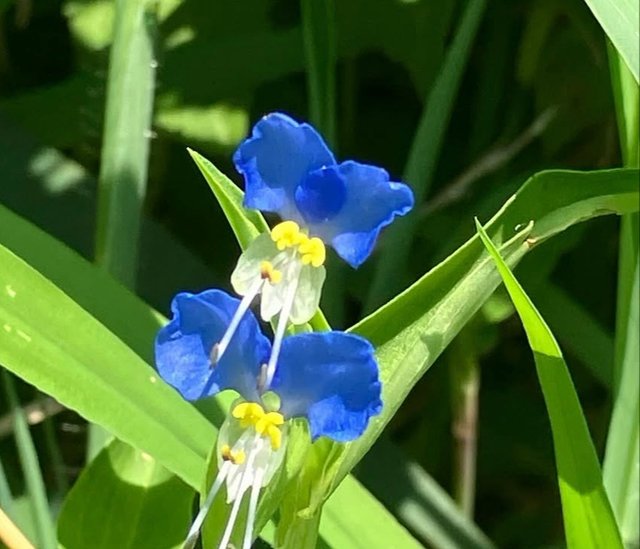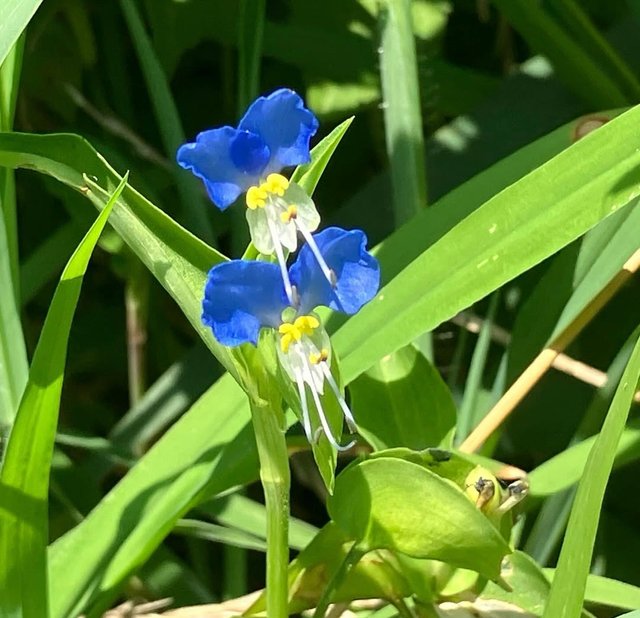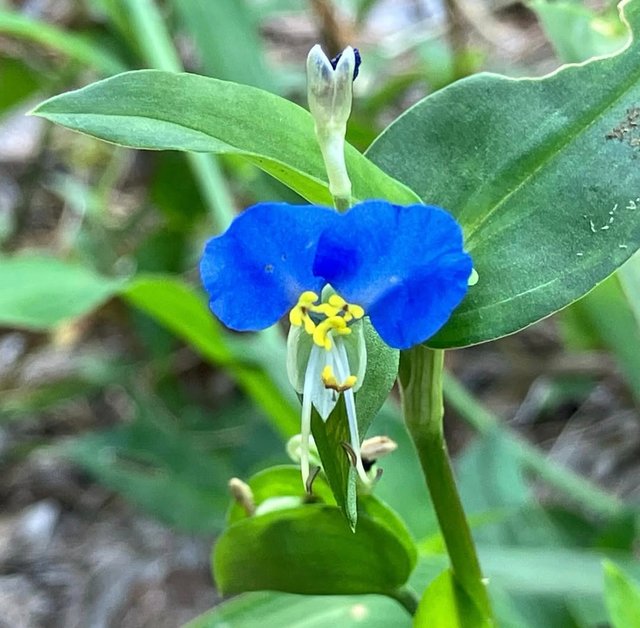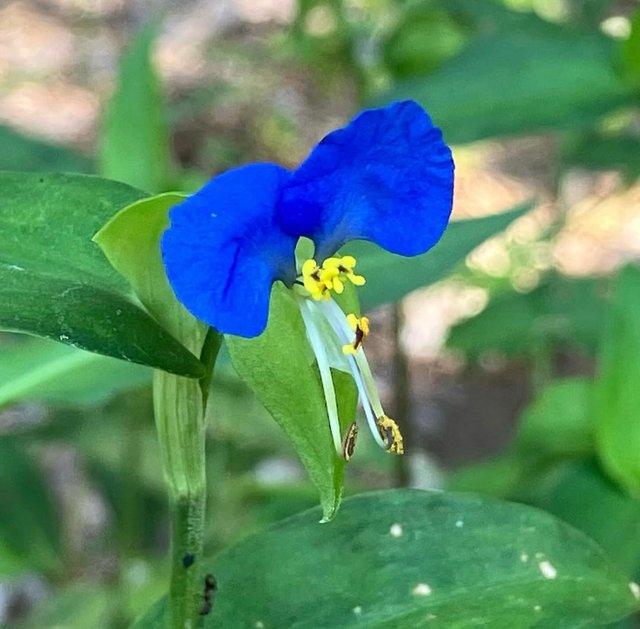Asiatic Dayflower
The Asiatic dayflower, known scientifically as Commelina communis, is a delicate yet resilient flowering plant that has captivated botanists, artists, and herbalists for centuries. Native to East Asia—including China, Japan, and Korea—this unassuming wildflower has now spread across many parts of the world, including North America, where it grows both as a garden escapee and naturalized wildflower.What makes it stand out? Its vivid blue petals that only bloom for a single day—thus the name “dayflower.” Fleeting yet beautiful, it is a living reminder of impermanence, yet also of resilience and ecological adaptability.
The Asiatic dayflower is a slender, spreading plant with soft, slightly fleshy stems. It thrives in moist, shady areas but can grow in a wide variety of environments.Lance-shaped and alternately arranged along the stem.Smooth-edged with parallel veins.Slightly sheathed at the base.Composed of three petals: two vibrant blue upper petals and one small, lower white petal.Yellow stamens at the center add contrast.Flowers last only for a single morning or day, closing or withering by the afternoon.
It favors disturbed areas, roadsides, moist ditches, field margins, and gardens. Its ability to colonize a wide variety of soils and light conditions makes it an excellent example of an adaptable species.Though small and short-lived, Commelina communis plays a valuable ecological role.Attracts bees and small insects that feed on its nectar and pollen.In some areas, it acts as a natural weed suppressant due to its spreading growth.Insects, birds, and even some herbivores feed on its leaves and seeds



